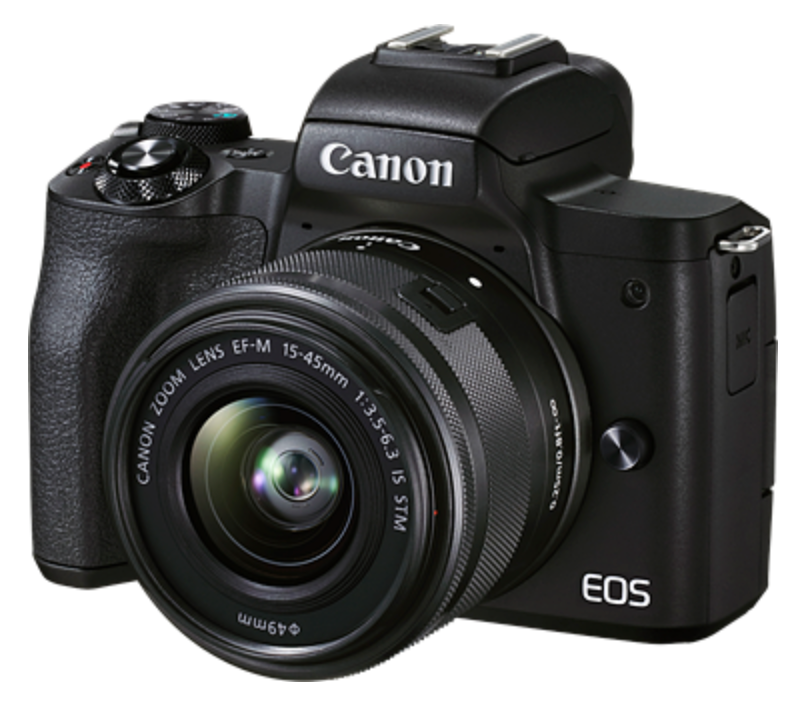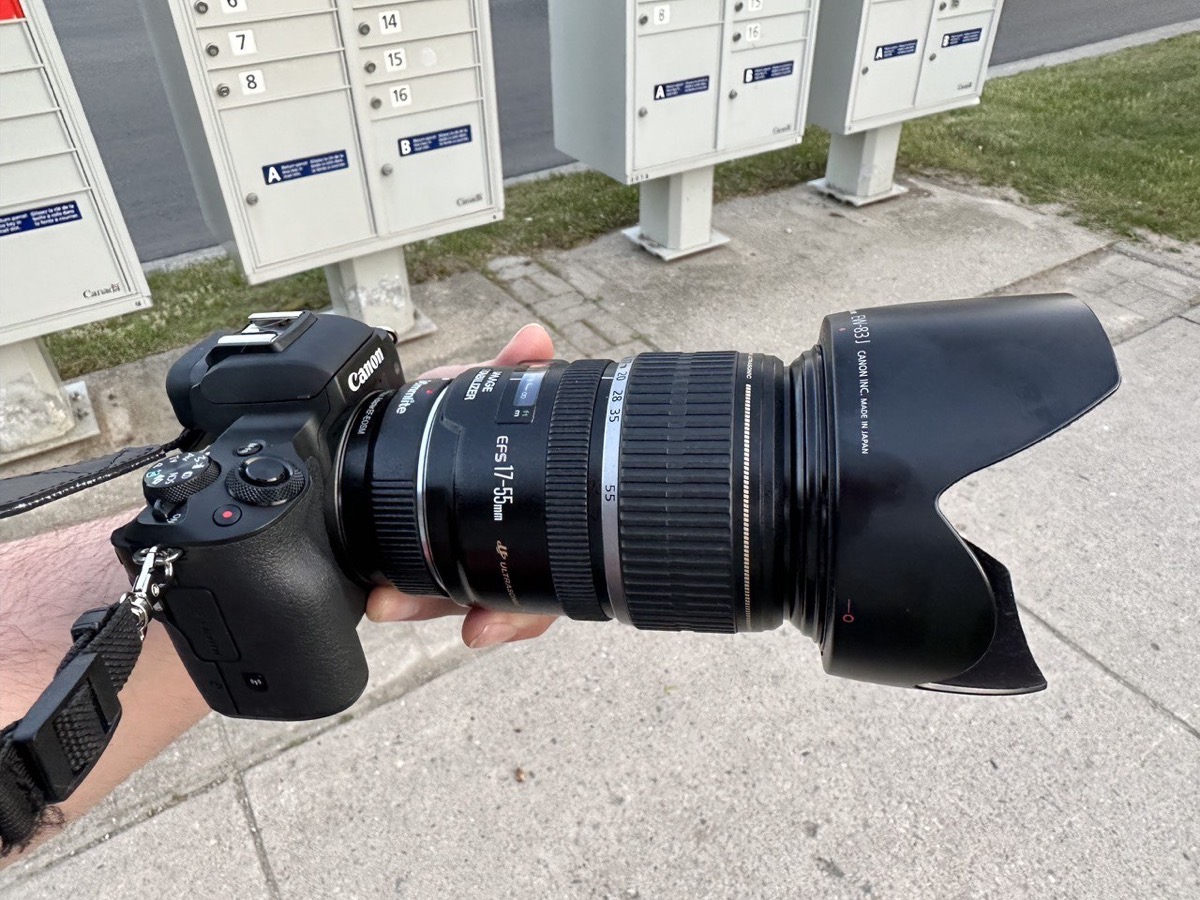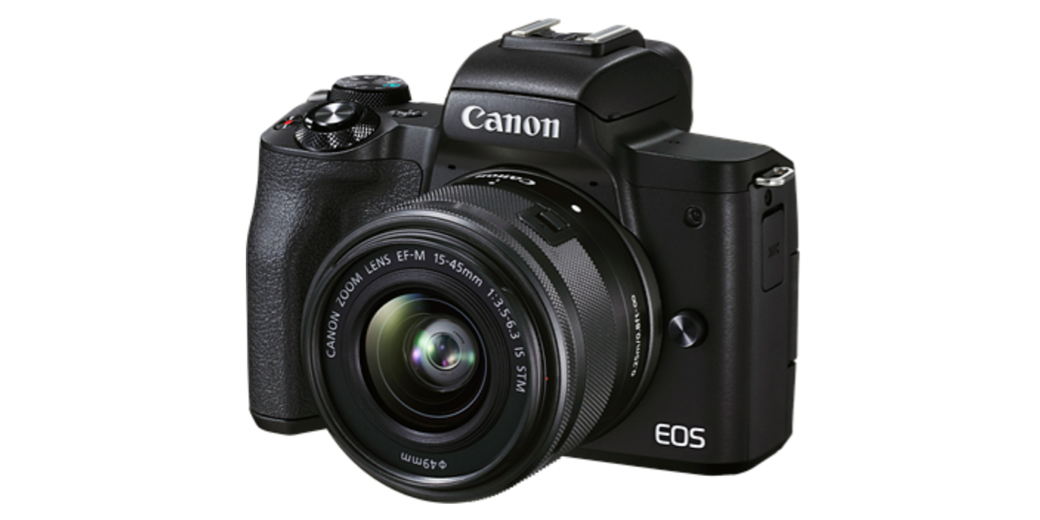
Allison likes to start with the problem to be solved. I was looking for a smaller, lighter camera for my trip to Walt Disney World in the summer. The camera I replaced was a Canon EOS 80D. It has a 24.2 megapixels APS-C size sensor and uses an EF mount. As far as image quality, features, and price it fit my needs well. It’s one big drawback? Its size and weight. It’s a full-size DSLR big boy camera. It weighs 730 grams.
So I started to consider the alternatives. Mirrorless was the way to go for a smaller body, and it’s also the future as far as big boy cameras go with most major manufacturers announcing they weren’t spending R&D money on DSLR cameras anymore.
Sony, Canon, Olympus, and Fuji all make great options. I know Allison has enjoyed her Olympus cameras, and I’ve read a lot of good things about the Fuji cameras. I have collected 3 or 4 Canon EF lenses, so it made sense to stay in the Canon family.
Currently, Canon has two lines of mirrorless cameras. The M-series cameras and the R-Series cameras. The M-series was Canon’s first stab at mirrorless cameras with APS-C-sized sensors. They are mostly aimed at amateurs and vloggers. They are significantly cheaper than even the entry-level R-series cameras and have been around for a few years longer and have had very few new innovations. I chose the Canon EOS M50 to replace my big boy camera. It has the same sensor as my 80D but with more pixels dedicated to autofocus. Its images are 24.1 megapixels.
It also boasts the Digic 8 processor, whereas my old camera had the Digic 6. This should improve image quality by reducing noise and enabling better autofocus features.
The M50 weighs 387 grams and has a significantly smaller body. It has an amazing autofocus system with eye detection that covers 88% of the frame. Its viewfinder is OLED with 2.4 million pixels and performs really well with little lag. There are a couple of negatives. Its small size and weight mean it’s got a smaller battery. It’s rated for only 235 shots on a full battery, while my 80D was rated for 960 shots. So a second battery is a must.
The smaller size also left less room for knobs and external controls. It’s only got one rotary control for controlling Shutter Speed or Aperture depending on the mode. This means when using it in full manual mode the one dial controls both adjustments via a toggle. This could be a big problem for anyone who uses Manual mode a lot. I mostly shoot in Aperture Priority, so this wasn’t a large concern for me.
The M50 has the EF-M mount. I purchased an inexpensive adapter that will allow me to use my old EF lenses with this new camera.

I’ve been very happy with this new camera, and expect its smaller size, mix of more modern features, and great image quality will help me make great photos while on my vacation.
You can purchase a new Canon EOS M50 Mk II for $599.
Thank you for listening to my review of the Canon EOS M50. You can find me on Mastodon at @[email protected].


Nice writeup, Steve. My choice of an ideal travel zoom is the Sony DSC-HX99. It’s less than 500 bucks. I carry it in my pocket with no case. It has a flip-up screen for selfies and shooting low to the ground. The zoom is 24-720mm. It has a popup electronic viewfinder for those bright sun days when I can’t see squat on the screen. It also has a popup flash that’s much better than the ”flash” on my my iPhone. I usually carry a couple extra batteries in an extra pocket… they’re small but are good for 200 pix or so. The sensor is small but most people don’t notice.
The last time I carried a big camera was in 2014 when I hiked on the Camino de Santiago in Spain carrying a Lumix DMC FZ200 bridge camera. No extra glass to carry but still way too heavy!
Yes, I shoot with my iPhone A LOT but when I need zoom or flash or EVF or I want to control the aperture or shutter speed I pull out the HX99. It’s the only camera I use. (I did recently purchase an Insta360 X3 but haven’t learned enough about it yet.)
Thanks for the comment, David. I’ve had it on my wish list for a long time to buy a tiny super zoom. I get as far as reading comparison sites and then pick one…and then run away because some spec seems subpar.
The last time I looked, it was actually Steven Goetz who talked me out of the one I was looking at, and it was because of the small sensor size. It was the same size as the Sony DSC-HX99 that you like (1/2.3″).
My requirement isn’t so much for full control as it is for the zoom. For less than $500 this looks like a good option. I carried my micro-four-thirds camera with me to Iceland and Antarctica and I used it for the 300mm equivalent zoom to get pictures of penguins and puffins. But it’s a lot bigger than the Sony.
Christmas is coming…